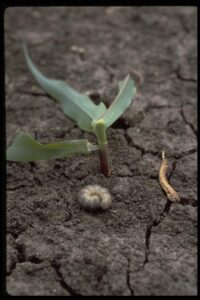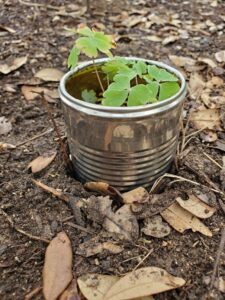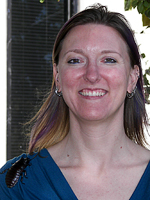It’s That Time of Year for Cutworm Damage
 Granulate cutworms are damaging in the immature, or larval stage. Cutworms can cut plant seedlings stems off at the soil level and on older plants they can climb the plant and feed on foliage or fruit. Young larvae skeletonize leaves while older larvae eat holes in foliage, feed on the surface of fruit, or burrow into fruit. Larvae are nocturnal, which may make it difficult to discover the culprit of plant damage. You may need to inspect the garden at night when larvae feed.
Granulate cutworms are damaging in the immature, or larval stage. Cutworms can cut plant seedlings stems off at the soil level and on older plants they can climb the plant and feed on foliage or fruit. Young larvae skeletonize leaves while older larvae eat holes in foliage, feed on the surface of fruit, or burrow into fruit. Larvae are nocturnal, which may make it difficult to discover the culprit of plant damage. You may need to inspect the garden at night when larvae feed.
Eggs are laid singly or in clusters on the upper surface of foliage. Eggs begin white in color, but darken as larvae get close to emerging. Larvae are grayish-red with a brown head and light markings along the side of the body. Larvae start off around ¼” but grow to 1.5” in length. Pupae are in soil and are a dark reddish-brown color. Adults are drab brownish-gray mottled moths with a wingspan around 1.5 inches. The front wings have a bean shaped marking paired with a circular marking.
Granulate cutworms feed on a wide variety of crops including beans, cabbage, peas, celery, watermelon, muskmelon, broccoli, cauliflower, potatoes, lettuce, onions, tomatoes, peppers, spinach, carrots, cucumbers, radish, beets, turnips, and Brussels sprouts.
Management Tips
If you have had cutworm problems in previous years, you can till soil before planting to disturb pupae. Plant collars can be used to physically block larvae from clipping new seedlings. Collars can be made from cut sections of PVC pipe, fruit/ vegetable cans with both ends cut out, or aluminum foil wrapped around stems of seedlings. A key to using plant collars is that they need to be partially buried in the soil and sticking up from the ground to protect the seedling and block larvae. If you are confident that no pupae are in the soil, row cover can be used to keep adult moths from laying eggs on the leaves of host plants. If eggs or egg clusters are spotted on plant foliage, they can be squished or removed from plants.

Use tin cans as plant collars to prevent cutworm damage.
Chemical treatment may consist of insecticidal soap on smaller larval stages. Bacillus thuringiensis (Bt) variety kurstaki is a biological product that only targets caterpillars and can help to conserve beneficial predator insects. Another biological product is spinosad which is selectively active on insect pests that feed on foliage. Both Bt and spinosad need to have good coverage on the infested plants as they need to be consumed for them to work. This would also mean that you would need to treat with these products in the evening since cutworm larvae are nocturnal. With any pesticide product, make sure to read and follow all labeled instructions and make sure that it can be used in the area that you plan to treat.
For more information or help with identification, contact Wizzie Brown, Texas AgriLife Extension Service Program Specialist at 512.854.9600.
Additional Resources
About Wizzie

Wizzie Brown
County Extension Program Specialist – Integrated Pest Management
Email:EBrown@ag.tamu.edu
Wizzie has been with Texas A&M AgriLife Extension Service since 2002 and has been playing with insects since she was a toddler. She is an Extension Program Specialist with the Integrated Pest Management (IPM) program. Wizzie holds a B.S. in entomology from The Ohio State University and a M.S. in entomology from Texas A&M University. The integrated pest management program provides identification, biological and management information to whomever needs help. Wizzie’s research focuses on imported fire ants, including community wide fire ant management. Wizzie also is happy to provide programs to area groups on a variety of arthropod-related topics. You can find insect and other arthropod information on Wizzie’s blog.
